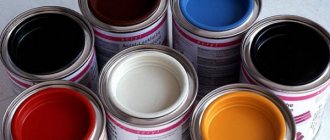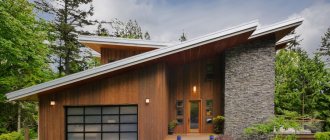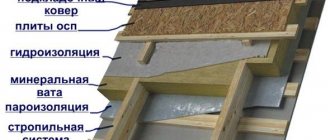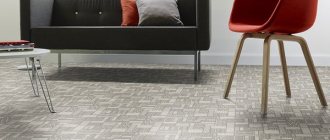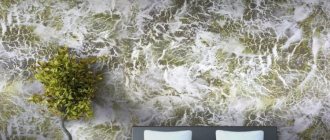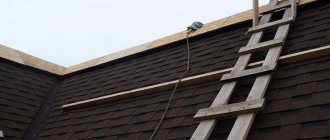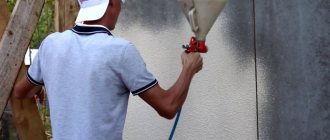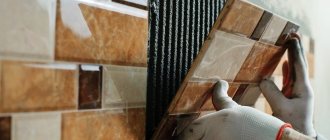Tile is the oldest, time-tested type of roofing, which undoubtedly belongs to elite materials. Its aristocratic appearance is successfully combined with the longest service life. The tiled roof is not afraid of any atmospheric phenomena.
However, the persistent trends of technological progress did not pass by the building ceramics so familiar to everyone. She has worthy rivals, with whom we are ready to introduce site visitors.
We will tell you what tiles are “through the eyes of contemporaries.” We will highlight the strengths and weaknesses of both the traditional material made of baked clay and the newest composite options. Let's look at their differences and outline the technical characteristics.
Roofing tiles: what is it?
Tile is a special type of roofing material, which is distinguished by the following characteristics:
- long service life;
- wide range of materials and shapes;
- resistance to the influence of external factors;
- excellent heat and sound insulation characteristics.
When looking for building materials for a roof, you need to find out what the tiles are made of. In the manufacturing process, both natural and artificial materials are used:
- sand;
- clay;
- cement;
- acrylic;
- metal;
- bitumen;
- fiberglass
The composition and production technology of this type of roofing determine their performance characteristics. Only by knowing what kind of material is used in a particular type of tile can you understand the strengths and weaknesses of the roofing material.
How to choose tiles?
In order not to make a mistake in choosing a tile covering, you need to approach the purchase seriously. It's worth prioritizing. What price range is optimal? How important is soundproofing? Strong or light load-bearing roof system?
It is necessary to calculate how much load the rafter system is ready to bear, because... It is possible that heavy tile options are simply not suitable. When choosing tiles, it is important to take into account weather conditions, heat and frost resistance of the roofing material. The stylistic decision of the building can also play a role: it is important to decide on the shape of the tiles, their appropriate color and exactly how the roof should ideally look.
A good way to select materials is to consult with specialists: store consultants, representatives of various companies and craftsmen working in the field of collecting tile roofs.
What types of roof tiles are there?
Roofing manufacturers offer the following types of tiles:
- Flexible roofing material.
- Tiles made of sand-cement mixture.
- Polymer-sand tiles for roofing.
- Natural ceramic tiles.
- Metal tiles.
- Roofing made of composite materials.
To choose a roof with the optimal set of characteristics, experts recommend carefully studying the pros and cons of popular types of tile roofing.
Natural tiles
This is a traditional type of tile. Clay is commonly used to make natural tiles. The raw materials are subjected to molding, high-temperature firing and glazing.
A significant disadvantage of natural tiles is their heavy weight, which requires reinforcement of the load-bearing elements. This material is difficult to install, so its installation is carried out only by specialists. Another disadvantage of natural tiles is their high cost.
Flexible tiles
Soft roofing is a separate group of building materials for roofs. Experts recommend that you find out what soft roofing tiles are before purchasing. This type of roofing is made of fiberglass or cellulose, which is covered with bitumen. Such material goes on sale in the form of separate sheets. Features of soft tiles are as follows:
- no noise when it rains;
- minimum percentage of waste during installation;
- good waterproofing indicator;
- high resistance to temperature changes;
- ease of preparation and installation.
This roof cladding material has a number of disadvantages that should be taken into account at the selection stage:
- lay bitumen shingles on the roof slope with an angle of no more than 12 degrees;
- flexible tiles are mounted only on a solid base;
- Laying the covering and repairing damaged elements can only be carried out by specialists.
To purchase the optimal roofing material, you should find out not only what kind of material is used in asphalt shingles, but also clarify the strengths and weaknesses of such a roof.
Specifics in preparing the base for laying
In fact, under all types of tiled roofing, sparse sheathing is installed. Its step depends on the size of the element.
It is necessary that each tile rests on at least three laths: at the top, in the middle, and at the bottom. The choice of timber for lathing depends on the weight of the covering.
Tiles of clay, concrete and polymer-sand tiles are fixed to the laths using mounting elements laid during the production process and wire. Simply put, they are screwed individually to the sheathing bar. The composite material is nailed down.
Only flexible bitumen shingles are attached over a continuous sheathing constructed from boards, plywood or OSB panels. This fact somewhat reduces the economic benefits of budget roofing, but significantly increases the insulating benefits of the roof.
When installing all roofing systems, except again for a roof with bitumen shingles, it is necessary to ensure ventilation of the space between the roof and the insulating pie, if there is one, or waterproofing, if there is no insulation. Ventilation in the form of vents is ensured by laying counter-lattice.
All types of roofing are used in the construction of cold and insulated attic roofs. All types of coating require waterproofing, which is currently used as a superdiffusion membrane. It allows condensation to pass out, but prevents atmospheric water from passing in.
The exception is the same flexible tiles. This material itself forms a continuous water-repellent coating. But its installers do not completely abandon waterproofing; they use a waterproofing barrier along the structural lines of the roof: ribs, valleys, eaves.
Cement-sand tiles: what kind of material for roofs
This roofing is made from a mixture of quartz sand and Portland cement. Some types of these tiles contain iron oxide and mineral additives, which give a certain shade to the products. This type of roofing tile is produced using 3-layer technology:
- painted concrete;
- sand-cement mortar;
- polymer-acrylic composition for the top coating.
A roof made from such tiles has the following set of positive qualities:
- Life time. The guaranteed operational period is 50 years.
- Material stability. It has increased resistance to aggressive environments, UV rays, and temperature changes.
- Fire safety. Cement-sand tiles are fireproof and prevent the spread of fire.
A wide range of shades is due to the use of various mineral additives.
The disadvantages of this product include the following:
- heavy weight, requiring additional strengthening of the base;
- high moisture absorption promotes the growth of fungi;
- Laying tiles is impossible without special skills.
Despite the presence of shortcomings, this type of tile is popular among owners of private houses.
General advantages of tile roofing
Tile roofing is installed mainly over residential buildings. Its very aesthetics are designed to impart respectability to the exterior and the feeling of a well-equipped “family nest.” Its main disadvantages are its considerable price, fragility and inconvenience of installation.
Thanks to the persistence of engineering, truly expensive coatings now have more affordable and technologically advanced analogues. Developers of new products sought to minimize the disadvantages of the clay coating, while maintaining and enhancing the true advantages.
The list of undoubted advantages of tiles includes:
- Environmental priorities. In production, either completely or predominantly raw components of natural origin are used. There is not the slightest problem with the disposal of used tile roofing.
- Excellent insulation. Tile coverings perfectly retain heat inside a building in frosty weather and provide coolness on hot days. In addition, they excellently dampen sound waves.
- Frost resistance. Tile roofs can withstand alternating freezing and thawing without the slightest damage. Do not crack or break due to temperature fluctuations over 150 test cycles.
- Moisture resistance. The material has minimal porosity, due to which it practically does not absorb atmospheric water and does not allow it to pass through itself.
- Maintainability. Piece roofs do not need to be completely replaced if a couple of elements are damaged. It is enough to install new tiles instead of damaged ones.
Like any other material of natural origin, tiles are able to “breathe”, i.e. freely allow household fumes that occur during breathing, cooking, hygiene procedures, etc. to pass out.
This fact greatly contributes to the long service life of the roof, the rafter frame, and the house itself.
Coverings made from any type of tile perfectly harmonize with buildings of any style and fit wonderfully into both urban and suburban landscapes.
This fact attracts not only architects and designers, but also ordinary consumers who want to wisely invest money in property development.
The disadvantages of tile roofing include:
- Impressive weight. For example, clay and cement-sand tiles put pressure on a rafter system weighing from 40 to 70 kg. This means that the owner who decides on a noble coating will also have to fork out for a durable frame.
- Labor-intensive installation. The installation of a tiled roof involves the installation and fastening of each tile - this is painstaking work that requires patience and accuracy from the master.
- Low impact resistance. Unfortunately, if handled carelessly, expensive material can easily be split, for example, by being dropped during installation. Tiles can be damaged not only during installation, but also during transportation.
The tiles are also not happy with the fairly significant percentage of waste from trimming during installation. This is especially noticeable when covering hip structures and when forming valleys. In order to reduce losses, manufacturers produce half tiles.
In addition, for the construction of tiled roofs, ridge elements are produced, designed to protect and externally decorate the ridge and hip ribs. There are special tiles that cover the pediment line with a monolithic shelf. Although we note that you can do just fine without them.
The undoubted disadvantage of ceramic roofing is the cost, the inhumane dimensions of which not all owners of country houses and dachas are ready to unquestioningly accept. It was these shortcomings that engineers developing new materials sought to combat.
As a result of this work, the group of piece coatings now includes:
- Cement-sand tiles. It was invented about a century ago in Germany. It is inferior to ceramics in terms of aesthetic parameters, and is also heavier, but significantly cheaper.
- Polymer sand tiles. Relatively “young” material, which appeared only three decades ago. It is twice lighter than ceramics, much cheaper, and much more interesting in appearance because it can be painted in a variety of colors.
- Composite tiles. Known to consumers for only two decades. It is a multilayer material with a metal base that provides resistance to mechanical stress. Much cheaper and almost thirty times lighter than ceramics.
- Bituminous shingles. It is included in the class of tile coverings only because it is laid in piece elements. This is a soft, flexible and very light material, essentially an ennobled roofing material with a very attractive appearance.
Piece tiles of composite and bitumen shingles are larger in size than ceramic standards. This means that installation is easier and noticeably faster. These materials are not characterized by the fragility characteristic of ceramic and concrete (also known as cement-sand) tiles.
There are also negative sides. For example, a bitumen roof, unlike clay, concrete and polymer-sand roofing, can support combustion. But when laying it there is a minimum of waste, it can be cut with ordinary scissors in any direction.
For laying all types of tile coverings, the minimum slope is approximately 12º. They are only suitable for pitched roofs, the recommended ideal slope is 30-45º. They are built in areas with average wind load. They are not afraid of snow loads of any category.
Polymer-sand tiles: what kind of material
When searching for a suitable building material for a roof, experts recommend finding out what polymer-sand roofing tiles are. This type of coating is made from a polymer base and a certain amount of sand. The polymers included in the composition give the tiles thermoplastic characteristics. The addition of modifiers and chemical additives ensures sufficient fire resistance and resistance to UV radiation. The use of various mineral pigments expands the range of shades of polymer-sand tiles.
Positive characteristics include the following parameters:
- increased wear resistance;
- light weight;
- good sound insulation;
- preventing the spread of fungi;
- resistance to temperature changes.
When laying tiles of this type, the following features should be taken into account:
- roofing material requires fine pitch lathing;
- The roof slope angle must exceed 45 degrees.
The polymer base used in production reduces the fire safety of the product.
Polymer sand tiles
Polymer sand tiles - video of problems after 7 years
Relatively recently, polymer sand tiles appeared on the building materials market. In a short time, it managed to establish itself as a reliable and aesthetic roofing material. It is made from a mixture of sand, dye and molten polymers. This combination of components determines the main properties of this roofing material: sand (about 70%) gives mechanical strength and resistance to environmental influences, polymer (usually polyethylene waste, about 25%) is a binding element, and the rest is occupied by a high-quality dye that provides tiles with rich lasting color. Under the influence of high temperatures, these components are transformed into a homogeneous mass, which is hot pressed under high pressure (up to 130 atmospheres). After cooling, this monolithic mass is almost impossible to destroy.
In terms of durability, polymer-sand tiles are not inferior to natural analogues, have increased bio- and chemical resistance, and their frost resistance exceeds 500 cycles. The roof does not become covered with plaque over the years, since the material has no pores and is easy to clean, and coloring additives of a wide range of colors, introduced into the mixture before melting, firmly stain the entire array of tiles.
Ceramic tiles: what kind of roofing material?
Of all types of roof tiles, ceramic is one of the oldest finishing materials. It consists of various types of clay, sand, and plasticizers. To give the product the desired shade during manufacturing, mineral dyes are used.
A roof covered with ceramic tiles retains its original appearance for a long time. It has the following characteristics:
- service life exceeds 100 years;
- high wear resistance;
- resistance to various temperatures and gusts of wind;
- sufficient vapor permeability;
- good thermal insulation indicator.
With the help of ceramic tiles you can quickly improve the aesthetics of the entire building and give it a finished look.
The disadvantages of ceramic tiles are represented by the following nuances:
- heavy weight of products;
- high price;
- the need to create a large roof slope.
Natural ceramic tiles are produced in several versions, which differ in shape and protective layer.
Shape and materials
To arrange a roof with an optimal set of parameters, you should find out in advance what kind of ceramic roof tiles are available. Currently, several varieties are produced:
- Flat with a rounded back. Such a product is mounted with an overlap. It is chosen for installation on complex structural objects.
- Wave-shaped with mounting grooves. The use of this type of product increases the geometry of the roof. It is used to cover walls of simple structures.
- Grooved roofing tiles. It has a special installation technology that only professionals can handle.
The protective layer of individual tiles is represented by the following materials:
- the natural coating gives the product a terracotta color, characteristic of natural baked clay;
- glazed tiles imitate glass coating and improve the appearance of the roof;
- The engobe coating is made from colored clay, which must be fired in an oven.
Such diversity allows you to not only understand what kind of material is used for tiles, but also which one is better to choose for your home.
Roofing pie for soft tiles
The design of the pie, cold or warm, directly depends on the type of roofing.
The cold pie is quite simple to install and consists of the following elements:
- Cobblestone counter-lattice.
- Continuous sheathing.
- Waterproofing layer. Can be installed along the entire perimeter of the roof or in certain areas.
- Soft tiles.
Cold roofing pie
For the base, plywood, OSB or boards are usually used. When laying boards there is no need for counter lathing.
Warm pie - a more complex design, presented in the following configuration:
- Vapor barrier layer.
- Counter-lattice of vapor barrier membrane.
- Insulation.
- Continuous sheathing.
- Waterproofing layer.
- Roof.
Warm roofing cake
Before proceeding with the actual installation of the roof, it is necessary to install the strips and carpet.
Only after this, the eaves tiles on a self-adhesive base are installed, and the ordinary tiles are laid from the central overhang towards the ends.
Galvanized nails are used to secure shingles. When the roof slope is more than 45 degrees, nails are fixed in six places.
The final stage is laying the ridge roof.
Cement-sand tiles are a material made from Portland cement and quartz sand. Iron and chromium oxide or mineral dyes are often added to the composition.
The material is produced in accordance with the standards of three-layer technology: the first layer is concrete, painted in the mass, the second layer consists of sand and cement, the third layer is a polymer-acrylic composition applied to the product.
Among the advantages of using this type of roofing, it is important to pay attention to the following:
- Long service life. The indicator exceeds the value of 50 years.
- Resistance when exposed to sub-zero temperatures.
- Possibility of producing material at home.
- Resistant to exposure to open fire, sunlight, and chemicals.
- Wide color palette.
Despite the large number of positive characteristics, this type of roof has certain disadvantages:
- The product is too heavy, which requires additional support during installation.
- Cement absorbs moisture quite well and creates an environment favorable for the development of fungus and mold.
- Work can only be carried out by professional installers.
Roof tile colors
Polymer-sand tiles
Polymer-sand tiles are a material made of sand and a polymer base with thermoplastic properties.
In addition, the product contains a dye, modifier and other components, due to which the level of resistance to fire and exposure to sunlight increases.
Those who prefer tiles of this type are offered a wide color palette of rectangular sheets of roofing material.
It is important to note that the tiles are painted in bulk: this is necessary so that in the event of damage at the chip site, the original color is preserved.
Polymer-sand tiles
The main positive characteristics, according to consumer reviews, are:
- Resistance to mechanical damage, so you don’t have to worry about the roof during transportation or installation.
- An unfavorable environment for the growth of fungus.
- Lightness of design.
- Resistant to low or high temperatures.
- Noise insulation.
Among the disadvantages, the following parameters are especially often mentioned:
- The need for fairly frequent lathing.
- The roof angle is at least 45 degrees.
- Fire hazardous material.
Roof made of polymer-sand tiles
Ceramic tiles
Natural ceramic tiles are a product that contains different types of plastic clay, as well as sand, filler and plasticizer. Dye is often added.
This type of roof attracts with its respectable appearance. In addition, the material retains its shape and original shade for a long time, and is characterized by a high level of resistance to fire, acid, sunlight and moisture.
Ceramic tiles
Among the advantages, it is especially important to highlight such characteristics as:
- The service life of the roof is at least 100 years.
- Resistant to low temperatures.
- No condensation due to the vapor permeability of the composition.
- Thermal insulation.
- Resistant to strong winds.
- There is no need to carry out additional work on grounding the roof.
- The rich appearance of the building, the roof of which is made of this type of tile.
However, there are also disadvantages to ceramic tiles:
- The design is too heavy.
- The cost of the material and its installation is quite high.
- Installation will require a large roof angle.
- Low level of resistance to mechanical damage.
Natural ceramic tiles are presented by manufacturers in several versions: all models differ in shape and type of protective coating.
Among the varieties of ceramic tile shapes, the following varieties are available:
- Flat, the underside of which is rounded. When installing such a roof, you will need to make a large overlap of material. Typically used on complex structures.
- The wavy one is equipped with specialized grooves, through which the level of roof tightness increases. Installation is usually carried out on simple structures.
- The grooved one has a special installation technique: the bottom row is mounted with the concave side out, and the top row with the concave side down.
The surface of the tiles can also be made of different materials:
- The natural covering has the shade of baked clay, which gives the roof an antique effect.
- The glaze coating is similar to glass and has a particularly attractive appearance.
- Agnob is a layer of colored clay that must be fired to harden it.
Ceramic tile roof
Metal tiles
This type of roofing consists of sheets of thin metal profiles. They are made of steel, aluminum or copper. For coating, compositions and technologies are used that increase the anti-corrosion properties and wear resistance of the metal.
Metal tiles can have a decorative coating. Buyers need to find out what kind of coated roof tiles are available. The following are chosen as a protective and decorative layer:
- polyester;
- acrylic;
- polyurethane.
This layer determines the shade and texture of the product and increases resistance to external factors.
Metal tiles have a lot of positive qualities, including:
- wide selection of shades, textures;
- light weight;
- ease of installation;
- long operational period;
- high wear resistance.
This type of roofing can be installed at any time of the year, which significantly increases its popularity.
The disadvantages of the product include the following qualities:
- low sound insulation;
- increased percentage of waste when cladding complex structural elements;
- If the integrity of the top coating is compromised, the risk of corrosion damage increases.
When laying metal tiles, professionals recommend using high-quality sealants for fasteners. This will prevent roof leaks in the future.
Bituminous shingles
Bituminous (or flexible) tiles Alta-Profile (photo No. 9)
How it is made
Bitumen shingles are one of the most popular types of soft roofing. This material is based on a dense fiberglass sheet, which is impregnated with high-quality bitumen with polymer additives. The following types of bitumen can be used:
- SBS-modified bitumen - with the addition of artificial rubber. This additive increases the elasticity of bitumen, resistance to severe frosts and high temperatures, as well as ultraviolet rays.
- Oxidized bitumen (enriched with oxygen). This bitumen is less flexible, but cheaper.
The top of the canvas is covered with fine-grained topping made of natural slate or basalt. Powder functions:
- Protects bitumen from ultraviolet radiation and strong heat (prevents bitumen from melting)
- Protects coatings from mechanical damage - birds, tree branches, hail, snow, etc.
- Increases strength
- Shapes the appearance - there are many options for color shades of the coating
The weight of bitumen shingles is from 6 to 15 kg/m2.
Advantages of bituminous shingles
Advantages of Alta-Profile tiles (photo No. 10)
- The warranty, depending on the manufacturer, ranges from 20 to 50 years.
- Suitable for installation of complex roofs. There is virtually no waste left during installation.
- Excellent sound insulation. Reduces noise from rain and hail.
- Fire resistance. The material does not burn well and does not ignite.
- Light weight. There is no need to strengthen the rafter structure.
- Large selection of shades
- The material is light and compact - easy to transport.
Disadvantages of bitumen shingles
- When laying bitumen shingles, a base of the underlying layer is required. This slightly increases the cost and scope of work.
- If the roof slope is less than 13 °, you need to use an additional underlay to protect the roof from moisture.
- Softens at high temperatures. It is not recommended to install bitumen shingles in hot weather. Also, in extreme heat, you should not move on such a roof.
- If the coating is damaged, it is difficult to make a partial replacement.
- Light weight. There is no need to strengthen the rafter structure.
- Large selection of shades
- The material is light and compact - easy to transport.
The underlying layer for flexible tiles from Alta-Profil (photo No. 11)
Composite tiles
Installation of a roof made of composite tiles - video
If you want your home to look attractive and stand out from others? Then you should pay attention to such roofing material as composite tiles. This material appeared on Russian markets relatively recently, but is already in good demand among construction companies and home craftsmen. Composite tiles are premium roofing materials.
Composite tiles are a multilayer material that consists of a steel sheet 0.5 mm thick, 0.4 m wide and 1.4 m long. The top and bottom of the material is coated with an alloy of aluminum, zinc and silicon. On the outside, the metal is covered with a layer of acrylic primer, which contains granules of natural stone.
Thanks to its coating, composite tile roofing is almost not subject to corrosion, exposure to ultraviolet radiation and can withstand sudden temperature changes. Composite tiles are durable and fireproof materials. The solid appearance of a roof made from composite tiles gives the roof the effect of a natural coating, which is typical of more expensive materials: ceramic or cement-sand tiles. The following companies have gained particular popularity among manufacturers of composite tiles: Metrotile (Metrotile), Luxard (Luxard), Roser (Roser). If you are interested in composite tiles, but have any questions about this roofing material, you can contact our consultants.
How to properly care for your roof?
Flexible tiles, the installation instructions are already known to you, will last much longer. If you care for it correctly: 1. Do not allow the material to come into contact with vegetable oils, solvents, or gasoline. 2. When inspecting roofs, try not to use sharp objects that could damage it. 3. Do not walk on the roof too often to avoid putting excessive stress on the material. 4. The roof should not be in contact with hot steam or heat sources that heat up to more than 45 degrees. That's all. Now you know how to lay flexible tiles.
